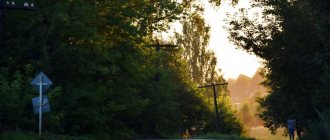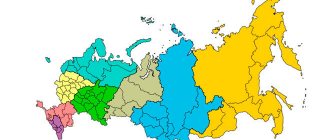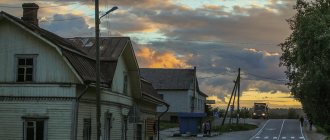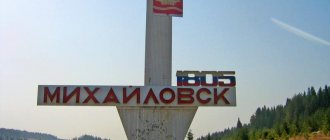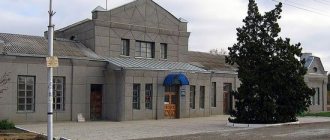Vyborg is a historical city in the northwestern part of the Leningrad region.
Vyborg is located on the shores of the Gulf of Finland only 60 km from the border with Finland. The city was founded in 1293 by the Swedes, but during its 700-year history it managed to be part of both the Russian Empire and Finland.
Vyborg Castle
Brief history of Vyborg
The history of Vyborg dates back to 1293, when during the Third Swedish Crusade to the Karelian lands, Vyborg Castle was erected on a small island. From 1293 to 1710 Vyborg Castle remained an impregnable outpost.
Vyborg received city status in 1403, after which it quickly turned into a large trading center. A lot of German merchants came to Vyborg. Some of them then returned home, and some built houses for themselves and stayed here to live. Gradually, German traditions began to prevail in the city.
After the founding of St. Petersburg in 1703, Peter I devoted all his efforts to conquering Vyborg. It was possible to capture the Vyborg Castle only in 1710, and in 1721 Vyborg officially became part of the Russian Empire. Due to the influx of Russian population, Vyborg began to grow. The defense of the fortress was no longer enough, and in the middle of the 18th century, defensive bastions were erected, named after St. Anne, or Annensky fortifications.
At the end of 1917, after the declaration of Finnish independence, a civil war began, and Vyborg came into the possession of the Finns. It became the second largest city in Finland and the main center of industry. In 1939, the peacetime of Vyborg was disrupted by the Soviet-Finnish war, as a result of which the city became part of the USSR. The Finnish population was completely evacuated to Finland, and Vyborg was quickly settled by Soviet settlers.
After the Second World War, Vyborg was heavily destroyed. To this day, many buildings in the historical center of the city continue to lie in ruins. Since 1991, the border with Finland has been opened. Now life in Vyborg has returned to a peaceful course, and the city, thanks to its Swedish past, is of great interest to many travelers and lovers of the Middle Ages.
Vyborg as part of Finland
Peter's period
When St. Petersburg was founded by Peter I at the beginning of the 18th century in the Neva delta, Russian rulers again turned their close attention to Vyborg. To ensure the security of the future Russian capital, Vyborg had to be made its territory. Peter understood that due to the close location of Swedish troops, the situation in this region could become precarious. Already three years after the founding of St. Petersburg, the first attempts by Russian soldiers to capture the fortress by land were made. But then the Swedes did not give the opportunity to realize the royal plans and the invasion of Vyborg received a severe rebuff.
Only four years after the first attempt, the new imperial campaign was crowned with success. The Swedes had already failed at Poltava and were morally broken, and this time Peter prepared his army more thoroughly. Troops numbering 13 thousand people besieged Vyborg not only from land, but also from water areas, approaching the fortress along the still unmelted ice of the Gulf of Finland. And in the spring, 2.5 hundred military ships with cannons and artillery pieces rushed to their aid. At the beginning of the summer of 1710, Vyborg lost its position. Russia secured St. Petersburg from invasion and gained access to the Baltic Sea.
Briefly about the sights of Vyborg
Vyborg is a unique city for Russia. Even despite numerous destructions, the historical center of Vyborg has fully preserved the spirit and appearance of a European medieval city.
The main attractions of Vyborg include:
- Vyborg Castle with St. Olaf's Tower
- Old Town Hall and Wekrut House
- Town Hall Tower
- Round Tower
- House of a burgher (citizen)
- House of the Merchant Guild of the Holy Spirit
- Buttenhoff House
- Church of St. Hyacinth
- Old Cathedral and Clock Tower
- Monuments to Count Apraksin and Peter the Great
- Annensky fortifications
- Transfiguration Cathedral
- Cathedral of Saints Peter and Paul
- Bank of Finland
- Central Market
- Monrepos Park
Round Tower or Fat Catherine in Vyborg. Address: pl. Market, 1
What to see in Vyborg and how to get there
Vyborg Castle
Vyborg Castle was built on a small island in the Gulf of Finland. The fortress, built at the end of the 13th century, belonged to its founders, the Swedes, for several centuries. Vyborg Castle was built on Karelian lands, conquered by the Swedish army from the Novgorodians during the Third Crusade. The square stone tower, surrounded by a high granite fence, became a reliable defense against enemy invasions. The impregnable fort with multi-meter walls only came under Russian rule at the beginning of the 18th century, when the fortress was besieged by the army of Peter I. Today, the Vyborg Castle houses a museum with rarities of the underwater world of the Baltic and the lands of Karelia; knightly tournaments, festivals, and literary readings are held here.
Monrepos Park
The founder of the landscape rock park on the shores of the Vyborg Bay is considered to be the former commandant of the fortress, Pyotr Stupishin. It was at his behest that in the middle of the 18th century an orchard was planted and a wooden manor was built. The relief granite rocks on which the garden was laid out gave these places romance and mystery. The name Monrepos was given to the park by the next owner, the Prince of Württemberg, and the heyday of these lands occurred during the ownership of the estate of the aristocratic Nikolai dynasty. Architects, sculptors and artists from various parts of Europe worked on the creation of the landscape zone. Today Mon Repos Park is a unique museum-reserve and one of the most beautiful landscape parks.
Round Tower
In the middle of the 16th century, the Round Tower was one of the fortifications that protected the Vyborg fortress from attacks. From small loopholes located on the tower walls, enfilade artillery fire was fired at the enemy. In those days, the Round Tower was on the front combat flank, but with the beginning of the era of Peter I, it lost its significance and began to be used as an armory. In the 20th century, a meeting room was equipped here and a restaurant was opened, which is still in operation today.
Hermitage–Vyborg
In the 30s last century, the world gravitated towards neoclassicism and avant-garde movements in art. At that time, Vyborg belonged to Finland, and the Finns built a cultural center building with a museum and an art school. Already in the first years, a large collection of works of art was collected in the building, and the new museum became the second most important in the country. After the Finns were defeated in the war with the USSR and Vyborg became Soviet, the cultural center closed. The exhibits remained in Finland and were distributed to other museums, and the building itself was subsequently heavily damaged by fire. In the early 2000s, the former center was reconstructed and its original appearance was restored. A museum and an art school were once again located here.
Burgher's estate
In the center of Vyborg, a complex of two medieval buildings, which were erected during the early development period, has been preserved. The complex included a city residential building and a carriage house - a covered parking lot for horse-drawn vehicles. The exact date of construction of the buildings is unknown. Presumably, the estate was built in the 16th century and belonged to a wealthy artisan family. During the Soviet period, the buildings were reconstructed in the spirit of the Middle Ages. Today, within the walls of the complex there is a museum and a restaurant.
Clock tower in Vyborg
The Vyborg Clock Tower is the former bell tower of the cathedral, destroyed during the Soviet-Finnish war. The two-level building burned several times, and only the lowest tier, made of medieval stone boulders, has survived from the original 15th-century construction. In the middle of the 18th century, a clock with a bell, brought from Sweden, appeared on the tower. At the end of the same century, after another fire, the restored tower acquired a third tier. An observation deck with an alarm fire bell appeared here, which has been ringing for more than two hundred years. The Clock Tower, along with the Vyborg Castle, is considered one of the main symbols of the city.
Annensky fortifications
After the capture of Vyborg by the troops of Peter I, the need arose to build new fortifications around the city. The old fortress walls became physically worn out after shelling, and also became outdated as defensive structures. The fortress, built along the coast of the Vyborg Bay, had the shape of a crown. That is why the kilometer-long wall of fortifications with crenellated bastions received the name Annekron - Anna's crown - in honor of Empress Anna Ioannovna. On the territory of Annekron there are several obelisks dedicated to memorable dates in the history of the city. Today the Annensky fortifications require restoration. Knight tournaments and tennis competitions are often held here.
Viking longships in Vyborg
Viking longships are moored on the Vyborg embankment - one of the most unusual attractions of the city. Wooden boats, analogues of which medieval knights used to move across the surface of the water, did not appear in Vyborg by chance. In the 80s last century, a film about a Viking youth was filmed here, and the boats were built directly for filming. Filming ended, and the boats were donated to the city. Drakkars today have become a place of tourist pilgrimage and a decoration of the city embankment.
Alvar Aalto Library
In the architecture of the city library, built in the 30s. last century, intertwined features of neoclassicism and modernism. The building was erected with sponsorship funds, according to the design of the Finnish architect Alvaro Aalto, whose name it still bears today. The Aalto Library became famous for the fact that when designing it, all the subtleties necessary for full-fledged book storage were taken into account. The library also has an unusual reading room with skylights, and lectures are held in a room with unique acoustics.
Vyborg station
The very first railway station building was erected in Vyborg in the 19th century. The first station was wooden and was built for the opening of the route connecting St. Petersburg with Helsinki. Half a century later, a granite building appeared on the site of the wooden station, famous for the fact that Lenin visited its walls more than once. The modern Vyborg Station was built in the middle of the 20th century - the building was built in the style of architecture of the Stalin era. As in past centuries, Vyborg Station is considered an important railway junction on the route of trains from St. Petersburg to Helsinki.
Market Square in Vyborg
The market square appeared in Vyborg when the outdated defensive structures of the city were dismantled. Today, only the Round Tower, which is now located on the border of the square, reminds of the former fortification buildings. In the 19th century, peasants from suburban villages briskly traded food in an open space covered with cobblestones. City administration buildings, banks and apartment buildings were erected along the perimeter of the square. Today Market Square is located in the very center of Vyborg. The main street of the city, Lenin Avenue, originates from it.
Vyborg Town Hall
On the central square of Vyborg is the Old Town Hall. The city government was located in a 17th-century building. During the Russian-Swedish battles, the town hall was heavily damaged by artillery shelling. After the war, the Vyborg administration moved to another building, and the town hall lost its original purpose. On the eve of the 20th century, the city leadership remembered about the mansion - the town hall was restored, built on and filled with tenants. Residential apartments are located here to this day, and in the mid-80s. last century, the Old Town Hall was included in the list of cultural heritage.
Spaso-Preobrazhensky Cathedral in Vyborg
The Orthodox church in Vyborg was built in the 18th century by order of Catherine II. It was erected in the central part of the city on the current Cathedral Square, according to the design of the architect Brockman. During its existence, the Transfiguration Church was rebuilt several times. Initially, the function of the bell tower was performed by a clock tower, but the clock mechanism was so powerful that its strikes drowned out the ringing of other city bells. Later, a three-tier bell tower was built at the temple, and at the very end of the 19th century the cathedral received the status of a cathedral. During Soviet times, the temple was closed, the archives were liquidated, and the icons were taken away. Today, the restored cathedral was again transferred to the Russian Orthodox Church and functions as before.
Red Square in Vyborg
Red Square is not only in Moscow - Vyborg can also boast a landmark of the same name. In the very center of the city, bounded by four streets, there has been a historical square for several centuries. In ancient times, it was called the Red Well Square, because it was here that the city residents collected drinking water from an underground source. Later, when a water supply system appeared in Vyborg, the area was used for market trade. In Soviet times, its center was decorated with a monument to Lenin, rallies and demonstrations were held. The historical buildings of the square have been partially preserved. The oldest is considered to be the apothecary house from the late 19th century.
House of Lallukka
At the beginning of the last century, businessman Juho Lallukka built a four-story house in Vyborg. The mansion was built according to the design of the architect Shulman in a romantic style. The building with arches and bay windows, lined with red granite, was considered one of the most beautiful in the city. The House of Lallukki housed commercial premises and residential apartments for the owner. During the Soviet-Finnish war, the building was badly damaged, losing its luxury and beauty. Today Lallukka's House has been restored. The ground floor is occupied by shops, and the upper levels are given over to residential premises.
Monument to Thorgils Knutsson
At the beginning of the 20th century, a monument to Torgils Knutsson, the founder of Vyborg Castle, was erected on Town Hall Square. A significant portion of the funds used to build the monument came from donations. The sculpture existed for only four centuries - during Soviet times it was dismantled, sent to the basement of one of the coastal buildings and forgotten for many thirty years. The monument was discovered and transported to Vyborg Castle by museum staff. After another decade and a half, the relic was restored with charitable funds and again took its place on Town Hall Square.
Bastion Panzerlax
In the very center of Vyborg there is the only surviving bastion of the Horned Fortress. Panzerlax was built in the 16th century, and its name translates as “defense of the bay.” At one time, targeted cannon fire was fired at the enemy from several loopholes of the bastion. Subsequently, powder warehouses were organized in the interior. The bastion was left to exist as a historical monument even after the destruction of the Horned Fortress. Today it houses the Vyborg collections of the Hermitage and archaeological exhibitions.
House of merchant Markelov
The romantic red stone House of Lallukki is not inferior in beauty to the House of the Merchant Markelov on Lenin Avenue. One of the city's richest merchants built this mansion at the beginning of the 20th century for residential and commercial purposes. Markelov's house was built by the same architect Shulman, who created the building for the businessman Lallukki. The facade of the building with “French” windows is decorated with animalistic and floral sculptural decor, the first floor and the main entrance with a portal are decorated with granite. During wartime, the appearance of the house was seriously damaged. Subsequently, the facade was restored according to a simplified design, losing some historical details.
Monument to the Vyborg tram
The yellow tram car on Teatralnaya Square, as well as the sculptures of the conductor and the stowaway passenger, were installed in honor of the era of the existence of city trams. This period in the life of Vyborg did not last so long - only 45 years. In addition to the tram monument, remains of rails have been preserved in several places in the city. The yellow trailer is not empty - it houses a mini-cafe.
Petrovsky Park in Vyborg
In the middle of the 19th century, Petrovsky Park was laid out on the territory of the Annensky fortifications, named in honor of the great reformer Tsar. The park was planted with long-lasting, tall trees, a monument to Peter was erected on a steep cliff, and construction of the cathedral began. When Vyborg became Finnish, the chapel at the temple under construction was destroyed. The Finnish military also dismantled the monument to Peter. The sculpture of the king was restored only in the middle of the last century.
Church of St. Hyacinth
One of the oldest buildings in Vyborg is the Church of St. Hyacinth. The medieval mansion in the Gothic style is also called the Knight's House. Once upon a time, on the site of the church stood a monastery of the Franciscan order. To house the monastery school within its walls, a new stone building had to be erected. After Swedish reform innovations, the monastery was closed, and the building passed into private hands. Already during the period of Russian rule, the Knight's House became the chapel of St. Hyacinth. During the Soviet period, there were warehouses and living quarters here, and since the early 2000s. - Children's art school. Today, exhibitions from the Vyborg Museum are exhibited in the Knight's House.
Square of the Old Town Hall in Vyborg
The square in the center of Vyborg, on which the Old Town Hall building is located, was formed back in the 14th century. It was there that the herald spoke when residents were notified that Vyborg had been awarded city status. Ancient stone mansions built along the perimeter of the square in past centuries have been partially preserved today. The guardhouse building, built in a classical style, has been decorating Town Hall Square for more than three hundred years. Even older is the house of the merchant Borchardt, where Catherine II once stayed.
House of the Merchant Guild of the Holy Spirit
A miniature house in the center of Vyborg is all that remains of a medieval manor from the 14th century. The modest white stone building with a red roof is one of the oldest buildings in the city. Once upon a time, members of the merchant guild of the Holy Spirit were housed here, and the house itself was two-story. Over the centuries, the lower floor went underground and became a basement. The house was reconstructed in the last century. Today it houses the information center of the Vyborg Museum.
East Vyborg fortifications
Medieval Vyborg on the eastern side was protected by the Horned Fortress. With its demolition, this part of the city was opened to enemies. In the 60s In the 19th century, about twenty kilometers east of Vyborg, new fortifications began to be built, called the East Vyborg fortifications. The defensive belt included several redoubts and bastions, powder magazines, barns, barracks and other buildings. More than one and a half hundred guns were placed on the fortifications. The powder magazines were surrounded by a battlemented red brick wall, which has survived to this day. Today, the East Vyborg fortifications are part of the historical development of the city.
Park named after Lenin in Vyborg
Lenin Park occupies an area of one and a half dozen hectares and is considered the main park area of Vyborg. Founded in the 19th century on the territory of old defensive fortifications. When the park was laid out, about two hundred tree species were planted in it. The most famous park buildings were the fountains, the Belvedere Hotel and the Espilya restaurant. During the Finnish period, the park was called Torkalsky, and during the USSR it became the park named after. Lenin.
Cathedral Square in Vyborg
Cathedral Square was built in the 16th century and was located in the very center of the Horned Fortress, which protected the city from the eastern side. Significant buildings within its boundaries appeared in Catherine’s era. The name of the square was given by the Transfiguration Cathedral, the dominant feature of the architectural ensemble. For a long time, Cathedral Square was the main square in the city. Today it is part of a cascade of three Vyborg squares (including Market and Teatralnaya), located on the same diagonal.
Church of Saints Peter and Paul in Vyborg
The only Lutheran church in Vyborg that has survived to this day is the Church of Saints Peter and Paul. During the late Middle Ages, the Lutheran community in Vyborg was very large, so it needed the construction of its own church. At the end of the 18th century, the first stone was laid in the foundation of the future temple. Tile, Arkhangelsk oak, and gilding were used in the interiors, and an expensive organ was brought from Germany for the performance of oratorios. The Church of Saints Peter and Paul was practically not damaged during the war, but during Soviet times the interiors were looted and the building was not used for its intended purpose. In the 90s last century, the temple was repaired and returned to the Lutheran community.
Sorval Cemetery
On the territory of the Sorvalsky cemetery in Vyborg there are several national cemeteries - Russian, Finnish, German, Swedish. The ritual territory was founded at the end of the 18th century on the island of Sorvali, near Mon Repos Park. At an Orthodox burial site in the 80s. In the 19th century, the Assumption Church was built, but destroyed during the Soviet-Finnish war. Today, the Sorval cemetery requires repair of tombstones and restoration of the territory.
Central Vyborg market
The building of the Vyborg market with a clock tower was erected at the beginning of the 20th century to replace the Gostiny Dvor, which remained unfinished. The Vyborg market has become the dominant market area and the largest Scandinavian market. During construction, a cooling system for meat rows, unique at that time, was used. The building was heavily damaged during the Soviet-Finnish hostilities. During the restoration, most of the unique elements could not be restored. The Vyborg market still fulfills its main purpose.
Vyborg Gofgericht
The classical-style mansion, also called the governor's palace, was built specifically for the Duke of Württemberg. Under Catherine II, the Duke served as Governor-General. After the establishment of a court court (Hofgericht) by decree of Emperor Nicholas I, the building of the Governor-General's House on Cathedral Square was occupied by judicial representatives. The President of the Vyborg Hoffgericht later acquired his own palace, built in the middle of the 19th century. Today the Hofgericht building is considered a cultural monument and is under state protection.
Interesting facts about Vyborg
- There is a real medieval castle in Vyborg
- St. Olaf's Tower has long been considered the tallest tower in Scandinavia
- Vyborg is the only Swedish city that became part of Russia
- Anninsky fortifications of Vyborg never took part in military battles
- The most destructive fire occurred in Vyborg in 1856 due to festive fireworks
- From 1912 to 1957 there was a tram in Vyborg
- There is a branch of the Hermitage in Vyborg
- The filming of the film “Interdevochka” took place in Vyborg.
Vyborg is very good for a one-day trip. If you are planning to visit Vyborg, be sure to check out our recommendation article: Sights of Vyborg in one day!
Monument to the Vyborg tram on Teatralnaya Square
Legends about the “Vyborg Thunder”
In 1495, a military clash took place again between the Swedes and Novgorodians. Not wanting to put up with the unequal position of Russian merchants in the Baltic, Ivan III decides to capture Vyborg and sends troops to its walls. The siege of the fortress lasted three months. Its assault went down in history as the “Vyborg Thunder.” This event was often mentioned in Swedish Finnish chronicles, becoming surrounded by legends.
According to chroniclers of the Middle Ages, higher powers helped the Swedes hold Vyborg. “The Russians brought us a lot of troubles and destruction... when we were ready to lay down our arms, a brilliant cross appeared in the sky..., at the sight of which our opponents were so frightened that they immediately fled.”
, wrote the Swedish bishop. A bright glow in the sky accompanied a deafening explosion.
According to one legend, the Russians were driven away by the Smellen cave, which supposedly made an unusually loud noise in case of danger to the city.
Another legend tells of an exploding “hellish cauldron” in which the commandant of the fortress brewed a “terrible potion”. Historians suggest that the cause of the explosion could have been barrels of resin or gunpowder reserves stored in the tower, but there is no confirmation of these versions. One way or another, the siege was lifted and the Russians returned to Novgorod.
In the Middle Ages, Vyborg was ruled by Swedish feudal lords. The city became one of the richest and most prosperous in Sweden, court life was in full swing here. The most influential Swedish aristocrats competed for the post of royal governor in Vyborg.
In the 16th century, behind the Stone Town, the Swedes erected another row of defensive walls, called the Horned Fortress for its shape.
Surviving fragments of the Horned Fortress
Meanwhile, the Russian-Swedish confrontation continued. During the Northern War, Vyborg became a serious threat to the newly built St. Petersburg. In 1706, Russian troops led by Peter I himself tried to capture Vyborg, but failed. But the campaign of 1710 brought victory to Russia: after a three-month siege, Vyborg was taken.
Business card of the city
The mysterious, ancient and enigmatic Vyborg Castle, located on the legendary Castle Island, has become the hallmark of Vyborg and its environs. Indeed, the building has enormous historical value. After all, this is the last architectural monument of the early Middle Ages on Russian territory. And at the same time, one of the largest centers is a medieval cultural center and a museum.
Vyborg Castle and other fortifications - Vyborg Castle (or fortress) is located on an island in the bay near the Stone Town. The five-meter-thick walls and numerous bastions were erected in 1293 by Thorgils Knutsson after the Swedes captured the Russian trading port located here during the third Crusaders' campaign against South Karelia. "Vyborg" means "holy fortress" in Swedish.
Merits of the city's rear
Throughout the war, advanced workers, collective farmers, engineers and scientists, overcame the greatest difficulties, showing enormous resilience, selflessly forging the weapons of victory. “Everything for the front, everything for victory!”, “In work as in battle!”, “Work not only for yourself, but also for your comrades who went to the front!” — our people in the rear worked under such slogans.
During the Great Patriotic War, the city's enterprises suffered significant damage. Many of them were never restored.
The city during the Second World War
With the very first shots fired at the border in Vyborg, martial law was introduced. Rallies were held with great patriotic enthusiasm at city enterprises and on surrounding collective farms. Many workers immediately signed up as volunteers in the people's militia.
The general unfavorable conditions of the first period of the war forced the Soviet troops to retreat, inflicting serious blows on the enemy in defensive battles. The evacuation of the population and the most valuable equipment began from Vyborg, which was largely completed by the end of July.
On August 29, 1941, Soviet troops left Vyborg. The Nazi invaders, who reached the Sestra River (here their advance was stopped), restored the fortifications of the “Mannerheim Line” on the Karelian Isthmus, destroyed during the Soviet-Finnish War of 1939-1940; moreover, using numerous natural obstacles, they created additional a number of lines with powerful defense support units. This entire system of fortifications was called the “Karelian Wall”.
The depth of the “shaft” was about 90 kilometers. This included three fortified lines and, in addition, a defensive contour 6-8 kilometers from Vyborg. The entire area was dug up by a dense network of trenches, anti-tank ditches, dotted with granite gouges, mines, and entangled with wire fencing. A division was stationed for every 8-10 kilometers of the front, and even more in the passages between lakes. The ground troops were supported from the air by more than 200 aircraft.
Modernity
The demographic situation is characterized by natural population decline. In 2009, 766 people were born, and 1,166 died. However, at the same time, there is an increase in migration: 1,210 people arrived in the city, 588 people left the city[22].
Age structure of the population (2008)
:
- children under 18 years old - 17.4%;
- economically active population - 54.4%;
- non-working population - 1.2%;
- pensioners - 27.0%.
Sex composition of the population (2002)
:
- men - 46.1%;
- women - 53.9%.
By ethnic composition, the majority of the city's population is Russian.
The economically active population is 42,600 people. The unemployment rate is 0.45%. There is an excess of the number of vacancies over the number of unemployed[22].
An excerpt characterizing the population of Vyborg
Arriving in St. Petersburg, Pierre did not notify anyone of his arrival, did not go anywhere, and began to spend whole days reading Thomas a à Kempis, a book that was delivered to him by an unknown person. Pierre understood one thing and one thing while reading this book; he understood the still unknown pleasure of believing in the possibility of achieving perfection and in the possibility of brotherly and active love between people, opened to him by Osip Alekseevich. A week after his arrival, the young Polish Count Villarsky, whom Pierre knew superficially from the St. Petersburg world, entered his room in the evening with the official and solemn air with which Dolokhov’s second entered his room and, closing the door behind him and making sure that there was no one in the room there was no one except Pierre, he turned to him: “I came to you with an order and a proposal, Count,” he told him without sitting down. – A person very highly placed in our brotherhood petitioned for you to be accepted into the brotherhood ahead of schedule, and invited me to be your guarantor. I consider it a sacred duty to fulfill the will of this person. Would you like to join the brotherhood of free stonemasons on my guarantee? The cold and stern tone of the man whom Pierre almost always saw at balls with an amiable smile, in the company of the most brilliant women, struck Pierre. “Yes, I wish,” said Pierre. Villarsky bowed his head. “One more question, Count,” he said, to which I ask you not as a future Freemason, but as an honest man (galant homme) to answer me with all sincerity: have you renounced your previous convictions, do you believe in God? Pierre thought about it. “Yes... yes, I believe in God,” he said. “In that case...” Villarsky began, but Pierre interrupted him. “Yes, I believe in God,” he said again. “In that case, we can go,” said Villarsky. - My carriage is at your service. Villarsky was silent the whole way. To Pierre's questions about what he needed to do and how to answer, Villarsky only said that brothers more worthy of him would test him, and that Pierre needed nothing more than to tell the truth. Having entered the gate of a large house where the lodge was located, and walking along a dark staircase, they entered a lighted, small hallway, where, without the help of a servant, they took off their fur coats. From the hall they went into another room. Some man in a strange attire appeared at the door. Villarsky, coming out to meet him, said something quietly to him in French and went to a small closet, in which Pierre noticed clothes he had never seen before. Taking a handkerchief from the closet, Villarsky placed it over Pierre's eyes and tied it in a knot from behind, painfully catching his hair in the knot. Then he bent him towards him, kissed him and, taking him by the hand, led him somewhere. Pierre was in pain from the hair being pulled in by the knot; he winced in pain and smiled from shame for something. His huge figure with his arms down, with a wrinkled and smiling face, moved with uncertain timid steps behind Villarsky. After walking him ten steps, Villarsky stopped. “No matter what happens to you,” he said, “you must endure everything with courage if you firmly decide to join our brotherhood.” (Pierre answered in the affirmative by bowing his head.) When you hear a knock on the door, you will untie your eyes,” Villarsky added; – I wish you courage and success. And, shaking Pierre’s hand, Villarsky left. Left alone, Pierre continued to smile the same way. Once or twice he shrugged his shoulders, raised his hand to the handkerchief, as if wanting to take it off, and lowered it again. The five minutes he spent with his eyes tied seemed like an hour. His hands were swollen, his legs were giving way; he thought he was tired. He experienced the most complex and varied feelings. He was afraid of what would happen to him, and even more afraid of not showing fear. He was curious to know what would happen to him, what would be revealed to him; but most of all he was joyful that the moment had come when he would finally embark on that path of renewal and actively virtuous life, which he had dreamed of since his meeting with Osip Alekseevich. Strong knocks were heard on the door. Pierre took off the bandage and looked around him. The room was black and dark: only in one place was a lamp burning, in something white. Pierre came closer and saw that the lamp stood on a black table, on which lay one open book. The book was the Gospel; that white thing in which the lamp was burning was a human skull with its holes and teeth. Having read the first words of the Gospel: “In the beginning was the word and the word was to God,” Pierre walked around the table and saw a large open box filled with something. It was a coffin with bones. He was not at all surprised by what he saw. Hoping to enter into a completely new life, completely different from the previous one, he expected everything extraordinary, even more extraordinary than what he saw. The skull, the coffin, the Gospel - it seemed to him that he expected all this, expected even more. Trying to evoke a feeling of tenderness in himself, he looked around him. “God, death, love, brotherhood of people,” he said to himself, associating with these words vague but joyful ideas of something. The door opened and someone entered.




